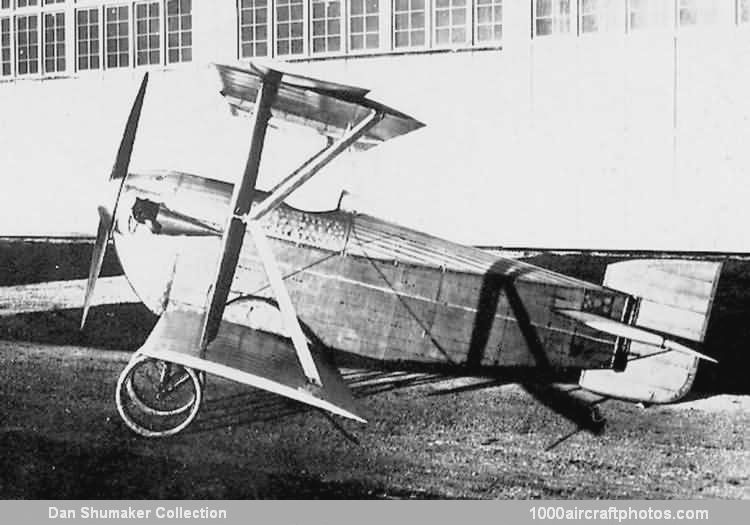Transcribed from the National Air and Space Museum website:
The Martin K-III Kitten was designed in 1917 by James V. Martin (not be confused with Glenn L. Martin) for the US Army as a high-altitude fighter. For this role, it was fitted with oxygen tanks behind the pilot's seat and provisions for electrically heating the pilot's clothing. The K-III was not completed before the end of the First World War, so Martin shifted his goals for the K-III toward the post-war civilian light airplane market.
The single-seat biplane was small and very light. It had a wingspan of just 20 ft 8 in (6.3 m), a length of 13 ft 5 in 4.1 m) a height of 7 ft 6 in (2.3 m) and empty weighed only 350 lb (159 kg). Of wooden construction, covered with fabric, it was powered by a 45 hp ABC Gnat two-cylinder engine. About sixty test flights were made in the summer of 1919 at the Dayton Hill and Dale Community Country Club in Dayton, Ohio, with little success. The airplane was only capable of brief hops of no more than 90 m (295 ft) at only a few feet of altitude.
Despite its failure as a practical airplane, the K-III had several interesting design features. The landing gear was retractable by means of a hand-operated crank. A novel element was the use of Ackerman spring wheels, which were intended to act as shock absorbers via flexible spokes. When fully retracted, the wheels went only half-way into the fuselage, theoretically enabling the airplane to land safely in the "wheels up" position. The K-III is generally recognized as the first airplane in the United States to be equipped with an in-flight-operated retracting landing gear. Martin also attempted to reduce drag by completely enclosing the control surface actuating rods within the airframe, another forward-looking idea.
Yet another design feature unique to the K-III was the 'K-strut' wing truss. The 'K' configuration was intended to equalize the moments and forces acting on the wing support, as well as to save weight and to reduce drag. Despite Martin's claims, McCook Field engineers reported no such benefits to the design. Also, rather than conventional trailing edge ailerons, the K-III had roll-control surfaces that pivoted at the wing tips. Martin's claims for the greater efficiency of this arrangement were later proved to be unfounded.
Although the K-III was essentially a failure, it does illustrate one pioneering aeronautical engineer's attempts to solve rudimentary aircraft design problems. The sole K-III was donated to the Smithsonian Institution by its designer, J.V. Martin, in 1924.
Three examples of a larger version, designated the K-IV, powered by a 60-horsepower Lawrance engine and equipped with floats, did successfully fly and were sold to the US Navy, BuNos. A5840 to A5842.
